The BBC Engineering Measurement and Receiving Station at Tatsfield
New: The
pictures below show Tatsfield in its heyday, but it now features on the
Derelict Miscellany
web site.
Vaino Lehtoranta, who worked at Tatsfield, has contributed the pictures
plus captions
below and a very good description produced by Engineering Information
Department in 1961. Click
here to see this document (1.8MB PDF file).
Vaino has pointed out that
this
article by Dennis Faulkner has an interesting section on Tatsfield.
These thee images 1,
2 and
3 and this
map (here
on Multimap) show the location of the former BBC
Tatsfield site, and here is a plan.

Entrance to BBC Tatsfield Measurement and Receiving station and BBC flag in
September 1968
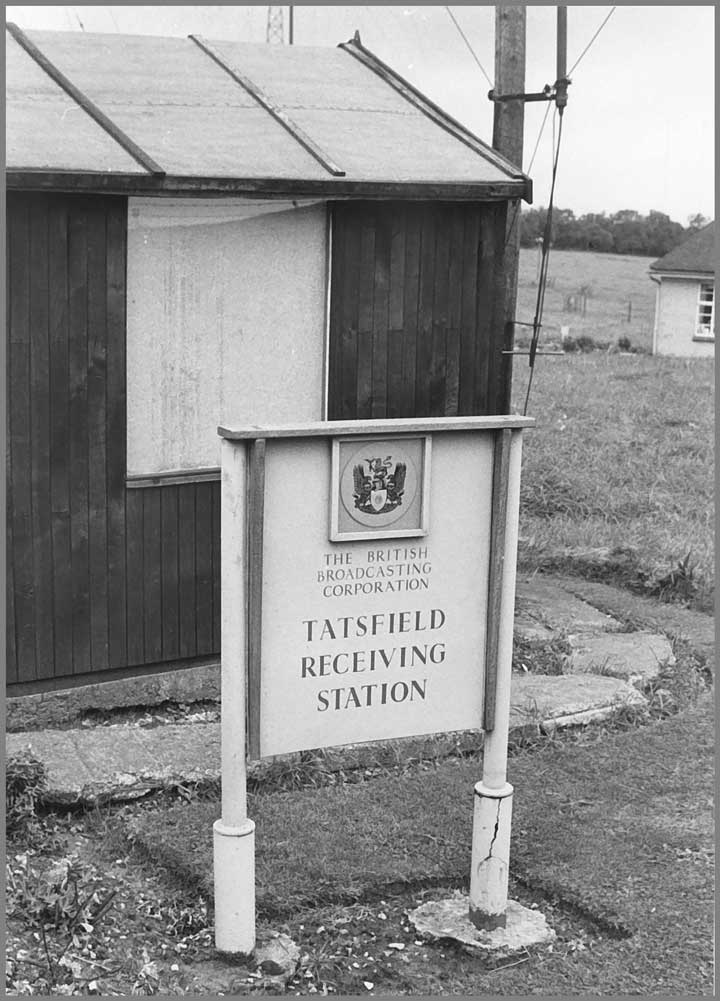
BBC Tatsfield Receiving station sign in September 1968
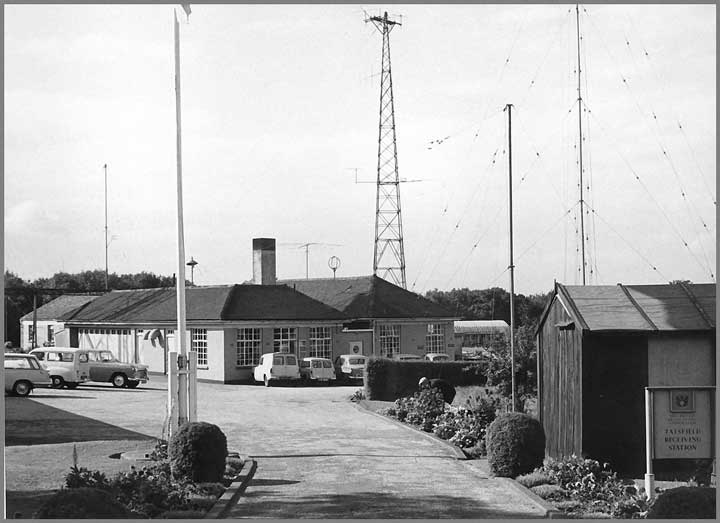
The main building. Above the roof is seen, from the left: BT wire aerial,
VHF yagi, cross loop, VHF/UHF mast etc.

Separate office building. E.i.C. is L.G.Shuttleworth, A.E.i.C. is
S.E.Martingell, plus clerical staff
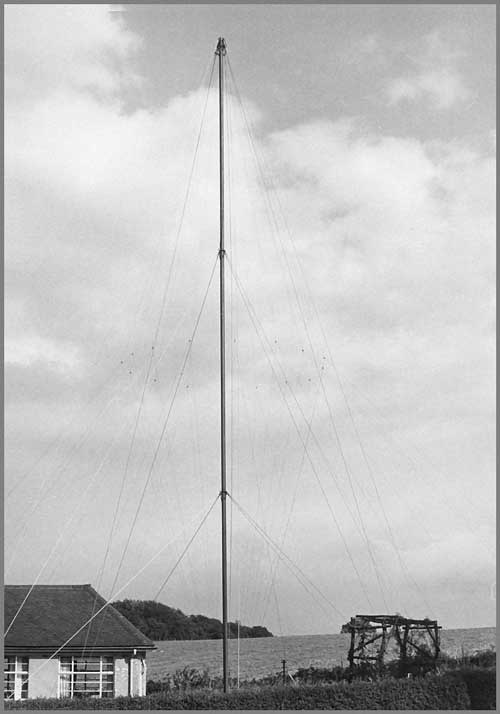
A broadband vertical receiving aerial
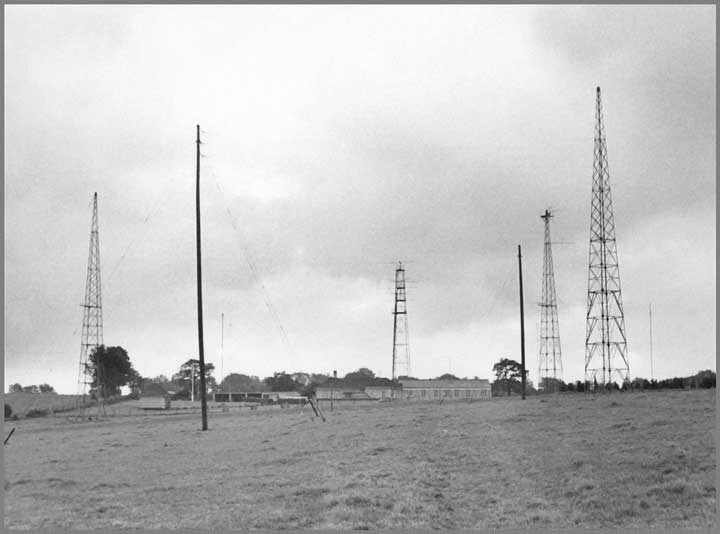
A view of the Measurement and Receiving station from the East in September
1968

A view of the Measurement and Receiving station from the South in September
1968

Plessey type BW-58 direction finder (Adcock & cross loop for <500kHz) was
installed in 1940, modernized in 1960

The Plessey Co. Ltd. BW-58 Cathode Ray type DF is of 1960 design, the
frequency range is from 150 kHz to 27 MHz
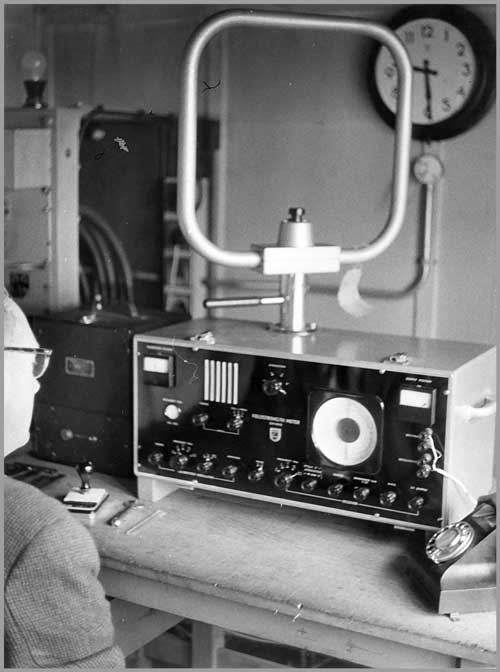
Philips GM 4010/01 Field strength meter (150 kHz - 26 MHz), in a separate
hut
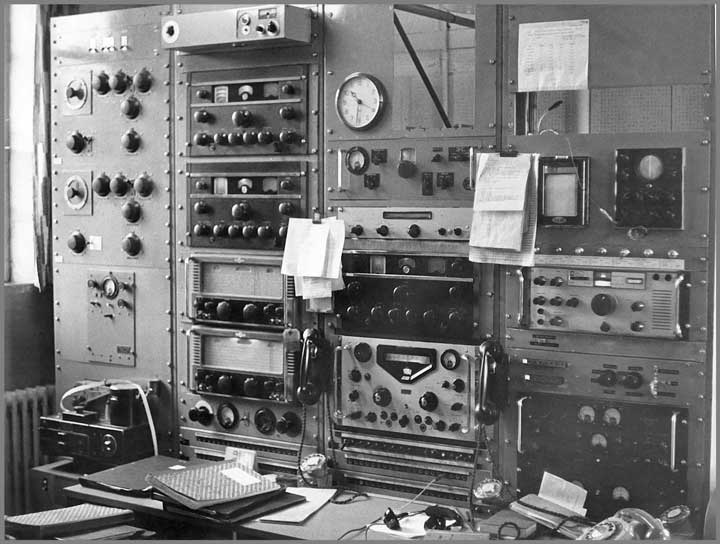
SME duty position (Operational Supervisory equipment), with RCA AR-88D,
AR-88LF,
Eddystone 770R & 770U, Racal RA-17, GEC BRT-400 etc
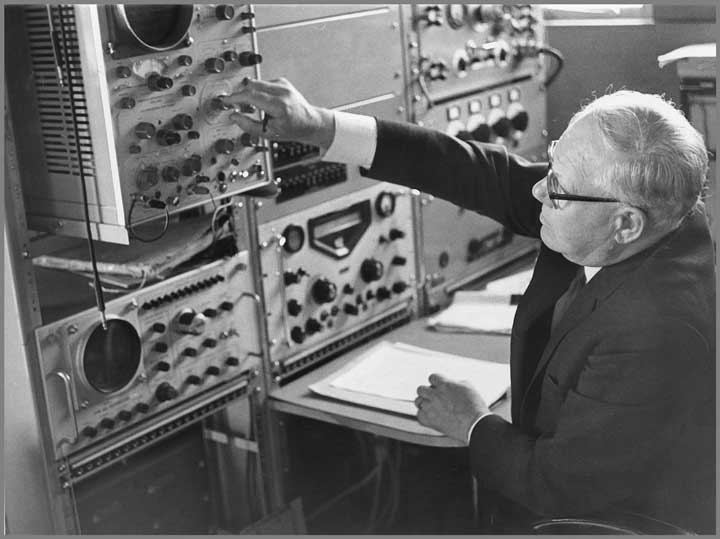
Backscatter measuring position next to SME, with Racal RA-17, Marconi TF
2200 oscilloscope etc.
In 1968 ground backscatter delay measurements of Daventry HF-signals were
scheduled eight times a day
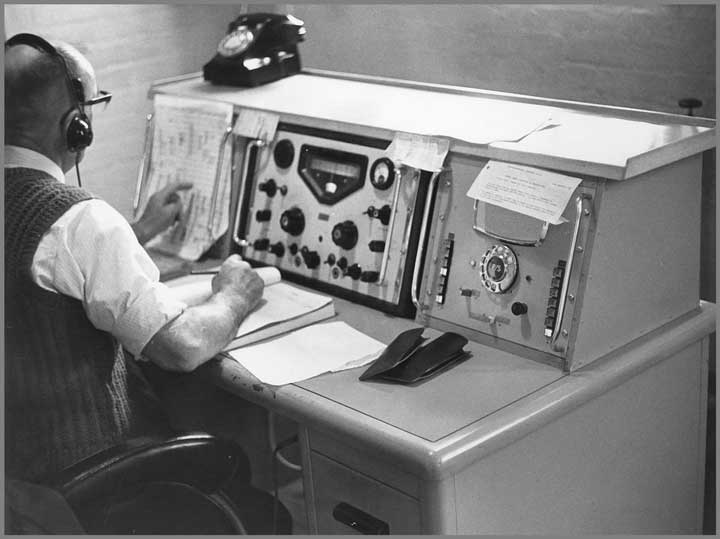
BBC programme monitoring cubicle with dialling facilities to obtain any BBC
programme direct by telephone line from London

HF frequency measuring position "Fl" (AR-88D & RA-17 and R&S FKM, XUA & XUB)

Mechanical Walter Huber FBS band-scanner (RA-17 & tape recorder)

LF/MF measuring position "F2" with Marconi TME-2 (1940) & Goniometer

The bays of relaying receivers : RCA AR-88D (0.54 to 30 MHz), GEC BRT-400
(150 kHz to 32 MHz), Hammarlund SP-600 "SuperPRO" (550 kHz to 54 MHz), Racal
RA-17 (1 to 30 MHz), Racal Adapter RA-137 (10 kHz to 1 MHz), (outside photo
is an old Mullard GFR-552 SSB receiver and a new Plessey Type PVR 806 ISB
receiver)
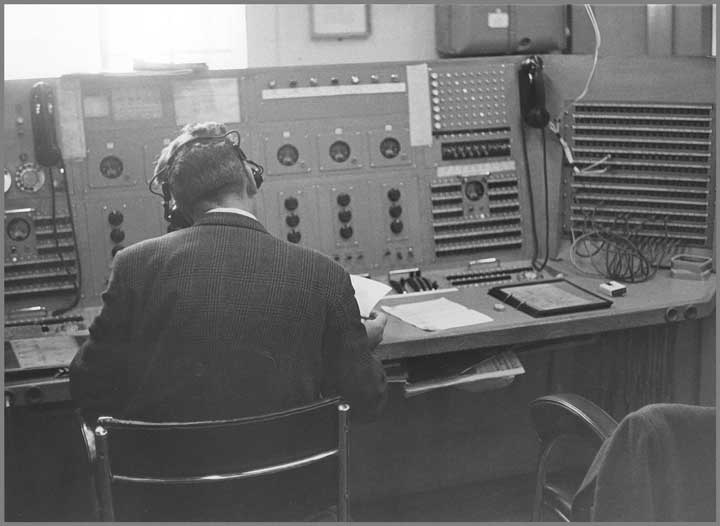
Program relaying position, a newer design compared to 1961 Engineering
Information Department document linked
 |
Chris Gardiner was most interested to see the inclusion
of the above section on Tatsfield and emailed to say: "I worked there
from 1963 to the end of 1969 with a break in 1968/9 on Ascension Island.
You might be interested in the attached photo showing the main control
room as it existed around 1968. The training supplement was published in
1969. I could scan the whole document but there are no more photos, only
a few diagrams and a lot of “dry” text. Probably much too specialised to
be of any general interest. I have shown this photo to many people over
the years because few people can imagine such a bank of receivers ever
existing.
The three racks on the left of the picture are an RCA dual diversity
ISB receiver, R.F. sections in the outer racks and the audio processing
in the middle rack. This receiver and the other SSB receiver Mullard
GRF-552 (out of shot to the right of the picture) were never used in the
early sixties as most operators found the standard AR88s, Racal RA17s
etc. easier to use.
When I came back from Ascension having had to use SSB for relaying
the 30kW transmitters at Daventry (frequencies 9317, 12182, 15914kHz, I
think) I started using the two SSB receivers and found the reception of
what was then almost entirely VOA relays from Greenville much improved.
Others then started using them as well.
I left Tatsfield and the BBC in late 1969 and Tatsfield closed down
soon afterwards although I don’t think these two events were
connected!!" |
|


















